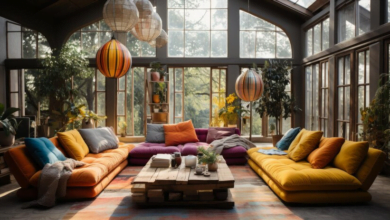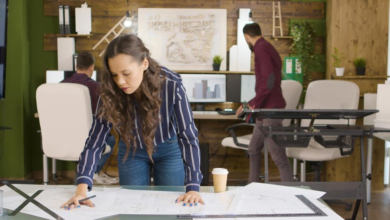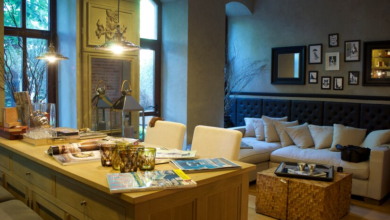
Interior design brings out the potential within your walls, crafting spaces that reflect your style. But before these spaces are designed, a whole process takes shape. In this post, we’ll look into all the phases of interior design process that result in the interior design style your home captures.
Phases of Interior Design Process
Read on to discover the six stages of interior design project for a successful interior project outcome.
Phase 1: Inquiry and Site Visit
The first stage of the design process is understanding the space you’ll be working with. This phase involves project inquiry and visiting the site or location to come up with a good interior design catered to the space. Whether it’s a residential home, commercial space, or office environment, gathering information about the client’s needs, preferences, and lifestyle is essential. During site visits, designers analyze the layout, architectural elements, lighting conditions, and any existing furniture or decor. This hands-on approach allows for a deeper understanding of the space, enabling designers to develop tailored design solutions that are functional and beautiful.
Phase 2: Inspiration and Concept Designing
The next phase is all about igniting your imagination and gathering inspiration. The phases of interior design process begin with brainstorming sessions, mood boards, and exploration of various design styles. Whether you’re a homeowner, business owner, or interior designer, this phase is where all the designing really starts. You can take inspiration from several sources for example by flipping through magazines, browsing online platforms like Pinterest, or even taking strolls through art galleries and nature.
Now, take your client’s dreams and turn them into tangible plans through concept designs. Sketch up diagrams to map out the layout of the space. Consider everything from spatial relationships and circulation paths to furniture placement and functionality. Think about details like flooring and tiles, lighting fixtures, window treatments, and wallpaper finishes. This is the chance for your creativity to flow as you envision the ambiance and vibe you want to create in your space.
Phase 3: Planning and Design Development
Now that you have a clear understanding of the space and client requirements, it’s time to put your ideas into action. This phase of the steps in interior design involves translating concepts into concrete plans and designs. Whether you’re sketching floor plans, creating 3D renderings, or collaborating with architects and contractors, thoughtful and clever planning is key. Finalizing layouts, stair locations, furniture arrangements, color schemes, woodwork, material selections, lighting locations, and equipment installations is essential to ensure that every detail aligns with the client’s vision and objectives.
Phase 4: Documentation and Implementation
As plans solidify, it’s crucial to document every detail carefully. This involves creating comprehensive construction documentation. These documents lay out all the technical specifications, from electrical layouts to plumbing plans, to make sure that everyone involved in the project is on the same page. It’s all about leaving no room for error and ensuring a smooth implementation process.
With plans in place, it’s time to bring your vision to life! This phase of the phases of interior design process involves coordinating with contractors, architects, artisans, and vendors to execute the designs. From furniture production to construction work, attention to detail is important. Regular communication and site visits are crucial to monitor progress, resolve any on-site issues, and ensure quality workmanship. Whether it’s a minor renovation or a full-scale makeover, witnessing the design come to life is a really rewarding experience for both designers and clients alike.
Phase 5: Execution
As the project progresses, it transitions into the execution phase of the interior design process phases. This stage involves overseeing every aspect of the implementation so that the plans are executed with precision and efficiency. Coordination among the different teams involved in the process is critical to maintain the project’s momentum and quality standards. Continuous site visits and ongoing communication with stakeholders help to address any challenges promptly and keep the project on track toward successful completion. It’s a collaborative effort where attention to detail and proactive management bring the design vision to its fullest potential.
Phase 6: Evaluation and Refinement
After the completion of the design project, it’s time to evaluate the results. Project evaluation is the last of the stages of interior design project which is all about perfecting every detail. Designers measure the success of the design implementation. This may be done by a questionnaire, interview, or feedback from clients with a walk-through inspection. Designers make any necessary refinements or revisions to ensure that the final result exceeds expectations. This includes adjusting lighting levels, fine-tuning furniture arrangements, or adding finishing touches to the final design.

Congratulations! Now your design project is ready. But the journey doesn’t end here. Interior design is dynamic, and spaces evolve. Regular maintenance, cleaning, and occasional updates are necessary to preserve the integrity of the design and accommodate any changes in the client’s needs or preferences. Whether it’s upgrading your decor or adapting to new technology trends, following up on your project will ensure it looks new for years to come.
Final Words
Whether you’re beginning a solo design venture, collaborating with peers, or seeking professional guidance, these phases of interior design process offer a roadmap to turning your design dreams into reality.
Reference: Architectural Digest



